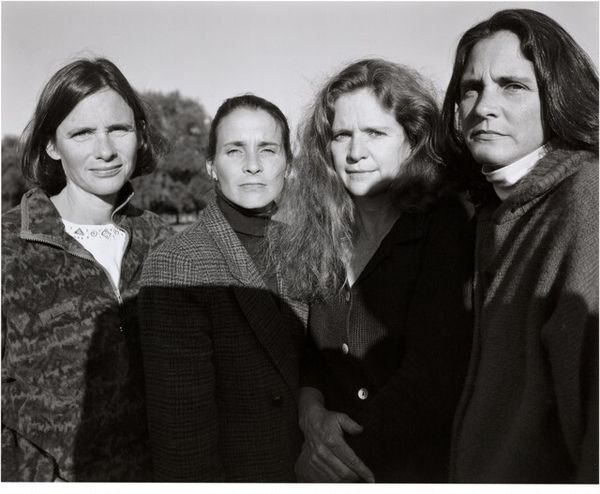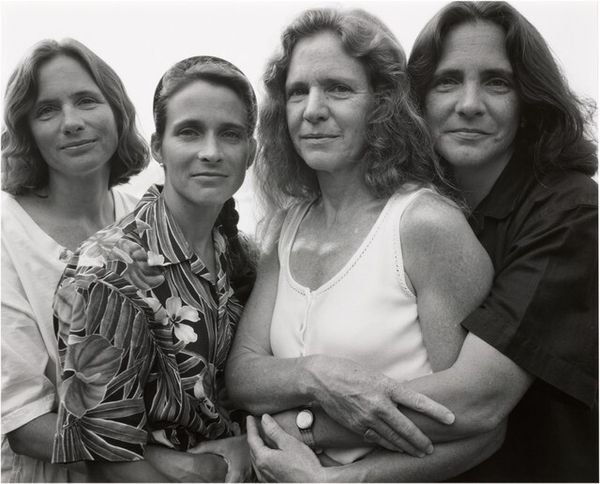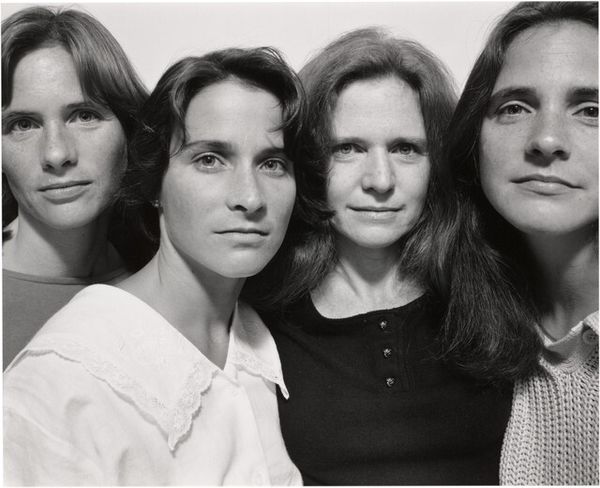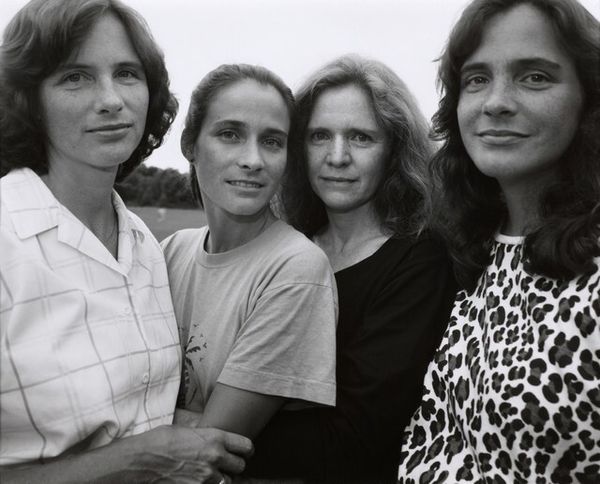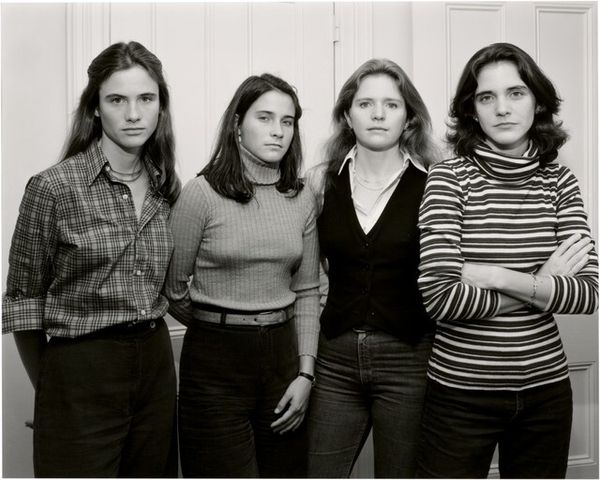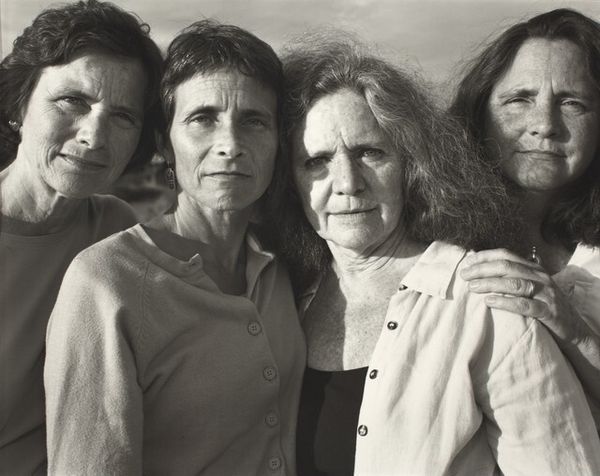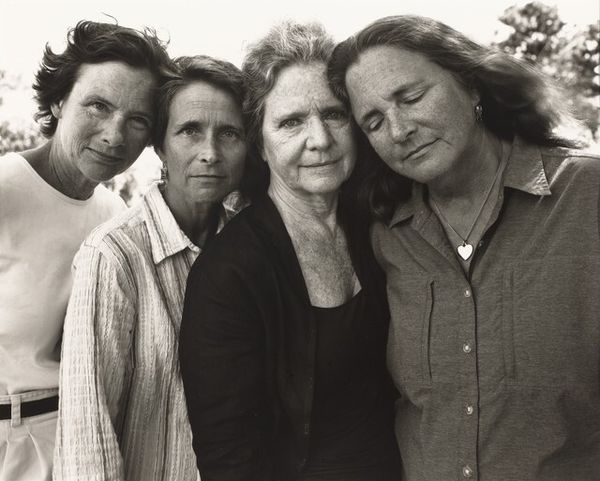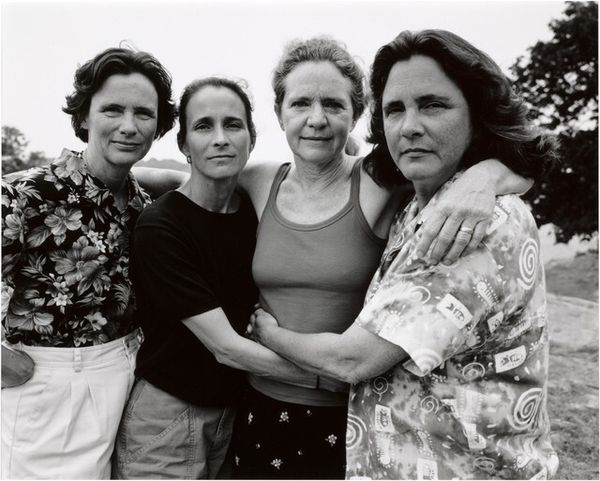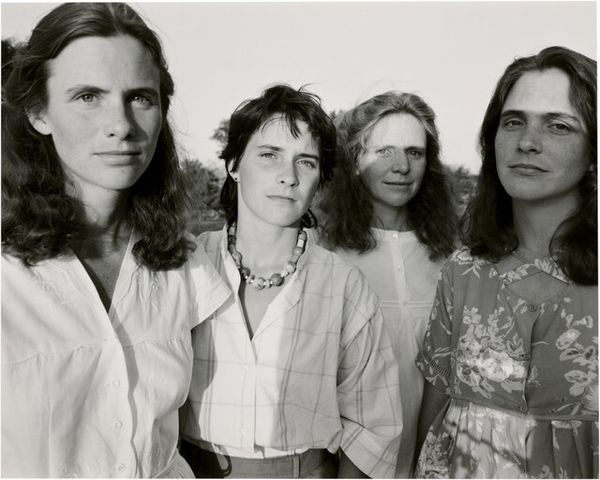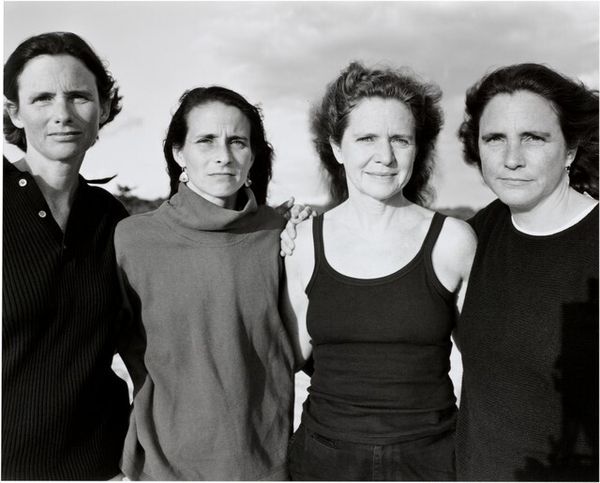
photography, gelatin-silver-print
#
portrait
#
contemporary
#
photography
#
historical photography
#
group-portraits
#
gelatin-silver-print
#
monochrome photography
#
monochrome
Dimensions: overall: 20.3 x 25.3 cm (8 x 9 15/16 in.)
Copyright: National Gallery of Art: CC0 1.0
Curator: Nicholas Nixon’s 1993 photograph, "The Brown Sisters, Boston, Massachusetts," captures a striking annual ritual in gelatin silver. It's a portrait, part of an ongoing series started in 1975, documenting four sisters each year. Editor: There's a solemnity to this particular image, isn't there? A quietness. The monochrome palette certainly emphasizes that, directing our gaze to their expressions. It’s more than a photograph; it's a record of time, family, aging... almost an anthropological study. Curator: Indeed. Nixon employs a large-format camera, a conscious choice that affects the work fundamentally. The technical process itself, requiring time and deliberate action, imbues the portrait with a certain gravity. It contrasts with the instantaneous nature of modern photography and the societal trends toward hyper-production of images and information in the contemporary moment. Each print becomes a valuable document. Editor: Precisely. Thinking about these portraits over nearly five decades also underscores the impact of repeated visual representation. The sisters' clothing choices, their hairstyles—all tell subtle stories about shifting social aesthetics, economic realities, and gendered expectations across these decades. We start contemplating issues around the female gaze, around shared and individual identity, all embedded in a socio-political landscape. Curator: Absolutely. And when displayed together as a series, the materiality of the gelatin silver prints themselves contributes to our reading of the work. Considering factors such as print size, paper stock, even the framing—details such as these contribute crucially to its aesthetic reception as we think about photography as a commodity of art in society. Editor: Seeing their subtle changes through time can make you consider not only personal histories but how media and photography can affect notions about gendered appearance as time changes for women. What is considered “beautiful” or "of value," who decides it, how, and when? Curator: Yes. It is interesting to reflect on this image given our modern era of digital photography; such pieces really make one think about what "documentation" truly means in a culture increasingly defined by simulacra. Editor: Agreed. There’s profoundness that these sisters chose, year after year, to open themselves to being examined so frankly in these images, and that profoundness says a great deal.
Comments
No comments
Be the first to comment and join the conversation on the ultimate creative platform.
